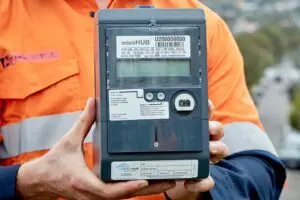The head of energy at Telstra, one of the country’s largest electricity consumers, says the growth of negative pricing events on Australia’s main grid is not the problem it is often portrayed as, and should be viewed as a “gift” to business that invites them to be flexible with demand.
The Australian Energy Market Operator this week noted that negative pricing events make up one in five trading intervals as the growth of renewables, and particularly solar in the middle of the day, when supply can exceed demand by a huge margin and generators bid low to ensure they are dispatched.
The result is often heavy curtailment of utility scale wind and solar, and is either seen as a price signal for storage, a disaster for proposed new investment, or the reality of a new grid paradigm where the focus shifts to demand management rather than only supply.
“What is most interesting to me at the moment is that all of the things that are pointed out as challenges of the energy transition, are in fact gifts,” Ben Burge, the head of Telstra Energy, said in a panel discussion at the All Energy Conference in Melbourne.
Burge says Telstra is well on track to sign up enough wind and solar to equate to its annual electricity use by 2025, and is now looking at how to switch demand profiles so it can turn electricity into other useful products at very low price.
“We’re looking at that gift of curtailment,” he said. “What is the opportunity?”
Bitcoin mining, he noted, is energy intensive and can be time sensitive (although some new developments suggest it could be more flexible than thought).
But he said other AI applications were a lot more flexible. “All of a sudden, we’ve got mega watt hours of energy being converted into petaflops (a measure of computer calculations).”
Burge says Telstra is now thinking about where to locate such data centres to best take advantage of the negative prices. He’s think about reference nodes and seizing on the dislocation between reference nodes, or state markets – some of them constrained by the lack of capacity on transmission lines.
The view by Burge is significant. Telstra consumes an estimated one per cent of Australia’s total electricity consumption, and other big users are also looking, where they can, to time shift production to take advantage of low prices and avoid high prices.
“Our business is looking to turn megawatt hours into … radio signals, into petaflops of computer signal and so forth,” he said.
“We’re seeing more and more industrial customers think about that. And when we see groups like Macquarie starting to back up their trading positions with physical asset investments, you know that there’s some momentum behind that.
“But I think it’s not simply a case of what’s going on with supply, it’s how you get the right type of demand to pull that through.
“Media is a really important part of this. We still see stories where it’s like, Boral has to shut down or turn down its production of cement due to spot prices and energy.
“Now I kind of sit there and go, ‘Well, hang on. Was that a bad news story? Doesn’t it reflect the reality of not just being able to use electricity whenever you want, regardless of the true marginal cost that is involved in supplying.
More controversially, Burge is pushing to remove the “asymmetry” in the market caps – which imposes (currently) a cap of $16,600/MWh at the peak, and minus $1,000/MWh at the bottom. He says both numbers should the same.
“Imagine what would happen if you took that invitation to go and use more energy to transform megawatt hours into something else,” he said.
Renewable energy developers are not so sure. Damien Sanford., from Tilt Renewables, in a later panel said the market floor should be zero dollars. He said the biggest beneficiaries for deep negative prices could be battery storage, but storage simply needed a “spread” of prices, rather than just negative prices.
He said a floor price of around minus $15,500 would make it hard to get investment and the reason the price floor should move to zero is because the coal plants – for whom the negative prices were created – are all likely to be out of the system in little more than a decade.
“The negative price floor was originally designed so the coal plants didn’t have to turn off because it’s more expensive to turn it off and restart them, and cheaper to pay someone to consume the load,” Sanford said.
“So maybe you change the investment signal and say consumers still get the benefit of having a low wholesale price which should flow through into the retail tariffs.
“But we won’t be turning off grid scale renewables (which many do when prices are negative) because you’re still getting an LCC or similar in the future that enables people to continue to invest, and and the storage will still make money and still be able to charge.
“Something has to change.”










